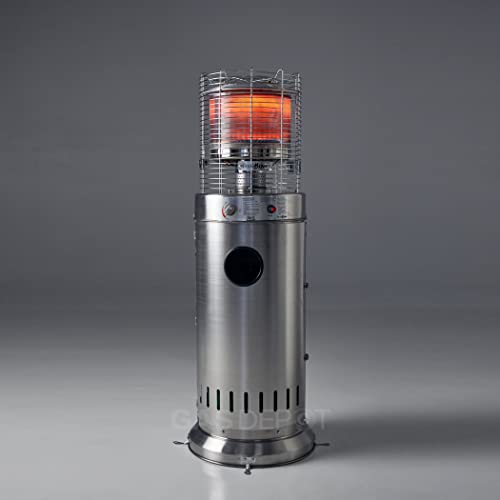3 Reasons Your Buy Gas Radiant Heaters Is Broken (And How To Fix It)
Buying Gas Radiant Heaters: A Comprehensive Guide
Gas radiant heaters have actually gotten appeal recently for their efficiency and ability to provide instantaneous heat. As Outdoor Heaters and services search for methods to keep their areas comfy, comprehending the functions, advantages, and considerations when acquiring these heating systems can be very useful. This short article dives into the intricacies of gas radiant heaters, assisting possible purchasers in making informed decisions.
What are Gas Radiant Heaters?
Gas radiant heaters are devices that use propane or natural gas to release heat directly into a room. Instead of heating the air, they warm things and individuals in their area, providing comfort more quickly and effectively. These heaters are popular for both indoor and outdoor settings due to their versatility and efficiency.
Key Features of Gas Radiant Heaters
- Direct Heating: Unlike traditional heaters that warm the air, gas radiant heaters provide direct warmth, making them an efficient option for quickly warming up spaces.
- Mobility: Many designs are readily available as portable units, enabling them to be quickly moved from one place to another.
- Fuel Variety: Gas radiant heaters can be powered by gas or propane, giving users versatility based on schedule and preference.
- Adjustable Settings: Most gas radiant heaters come with adjustable heat settings, permitting users to tailor the level of warmth based on their requirements.
Advantages of Gas Radiant Heaters
- Energy Efficiency: These heaters transform gas into heat effectively, resulting in lower utility bills compared to electric heaters.
- Quick Heating: Radiant heat is felt nearly instantly, making these heaters suitable for unexpected temperature level drops.
- Low Maintenance: Gas radiant heaters normally require less maintenance than electric models, making them a problem-free option.
- Eco-friendly: When powered by clean gas, these heaters can be a more environmentally sustainable option compared to other heating techniques.
Types of Gas Radiant Heaters
When it pertains to selecting a gas radiant heater, it's necessary to understand the various types readily available. Below are the most common options:
- Indoor Gas Radiant Heaters: Designed for indoor spaces, these heaters are usually vented or unvented and frequently featured integrated security features.
- Outdoor Gas Radiant Heaters: Commonly utilized in patio areas or outdoor dining areas, these heaters are developed to hold up against the aspects.
- Wall-Mounted Gas Radiant Heaters: A space-saving alternative, these units are perfect for smaller sized spaces and can be outfitted with different heat outputs depending on the area's needs.
- Freestanding Gas Radiant Heaters: These portable designs can be used in different places, best for those who require versatility.
Buying Guide: How to Choose the Right Gas Radiant Heater
When purchasing a gas radiant heater, a number of aspects must be thought about to guarantee you pick the best model for your space:
1. Heating Capacity
- Measured in BTUs (British Thermal Units), the heater's capability identifies how much location it can successfully warm. Buyers need to examine their particular requirements based upon space size.
Room Size (sq ft)
Recommended BTUs (for Gas Radiant Heaters)
100 – 200
5,000 – 10,000 BTUs
200 – 400
10,000 – 20,000 BTUs
400 – 600
20,000 – 30,000 BTUs
600 – 800
30,000+ BTUs
2. Type of Gas
- Think about whether you will be using propane or gas, as different heaters deal with different fuel types.
3. Security Features
- Search for models geared up with safety functions such as automatic shut-off valves, tip-over security, and oxygen depletion sensors.
4. Setup Requirements
- Some heaters might require expert installation, especially vented designs. Make sure to think about the costs and requirements connected with setup.
5. Portability
- If flexibility is essential, think about portable designs that can be quickly moved from one area to another.
Setup and Maintenance
Gas radiant heaters are generally uncomplicated to set up, specifically portable models. However, vented options may demand expert installation to guarantee they satisfy regional security codes.
Upkeep normally includes:
- Regular cleansing to avoid dust buildup.
- Checking gas connections and fittings for leaks.
- Making sure security features are practical.
Idea: Regular checks around the system can assist extend its life expectancy and preserve safety.
Frequently Asked Questions (FAQs)
Q1: Are gas radiant heaters safe for indoor use?A1: Yes
, as long as they are effectively vented and geared up with necessary safety functions, they can be securely utilized inside.
**Q2: Can gas radiant heaters be utilized in enclosed spaces?A2: Unvented gas heaters can present threats in enclosed spaces due to possible suffocation or carbon monoxide gas accumulation. Constantly make sure adequate ventilation. Q3: How do I understand what size heater I need?A3: The proper size depends upon the location you intend to heat. Refer to the BTU chart
above to identify your requirements. Q4: What is the difference between propane and gas heaters?A4: The primary difference depends on their energy source
**; propane is provided through tanks, while gas is normally piped into homes. Q5: How can I optimize efficiency?A5: Ensure the heater is properly sized for your space, maintain it regularly, and think about utilizing it in mix
**with other heating methods for optimum comfort. Gas radiant heaters can be an excellent addition to any home or business, providing energy-efficient and fast heating solutions. By comprehending the different types, features, and considerations
when buying, purchasers can make educated decisions that meet their heating needs. With the best choice, these heaters supply comfort, reliability, and a welcoming environment throughout cooler seasons.  ******
******